Ubiquitous computing is a concept in software engineering, hardware engineering and computer science where computing is made to appear seamlessly anytime and everywhere. In contrast to desktop computing, ubiquitous computing implies use on any device, in any location, and in any format. A user interacts with the computer, which can exist in many different forms, including laptop computers, tablets, smart phones and terminals in everyday objects such as a refrigerator or a pair of glasses. The underlying technologies to support ubiquitous computing include the Internet, advanced middleware, kernels, operating systems, mobile codes, sensors, microprocessors, new I/Os and user interfaces, computer networks, mobile protocols, global navigational systems, and new materials.
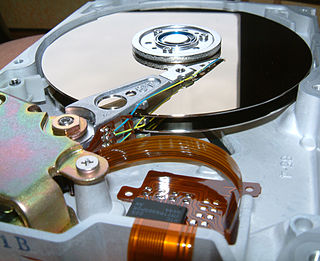
In mass communication, digital media is any communication media that operates in conjunction with various encoded machine-readable data formats. Digital content can be created, viewed, distributed, modified, listened to, and preserved on a digital electronic device, including digital data storage media and digital broadcasting. Digital is defined as any data represented by a series of digits, and media refers to methods of broadcasting or communicating this information. Together, digital media refers to mediums of digitized information broadcast through a screen and/or a speaker. This also includes text, audio, video, and graphics that are transmitted over the internet for viewing or listening to on the internet.

Home automation or domotics is building automation for a home. A home automation system will monitor and/or control home attributes such as lighting, climate, entertainment systems, and appliances. It may also include home security such as access control and alarm systems.
A voice-user interface (VUI) enables spoken human interaction with computers, using speech recognition to understand spoken commands and answer questions, and typically text to speech to play a reply. A voice command device is a device controlled with a voice user interface.
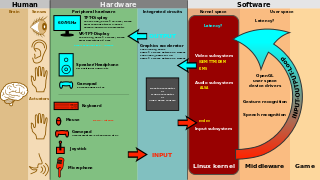
User interface (UI) design or user interface engineering is the design of user interfaces for machines and software, such as computers, home appliances, mobile devices, and other electronic devices, with the focus on maximizing usability and the user experience. In computer or software design, user interface (UI) design primarily focuses on information architecture. It is the process of building interfaces that clearly communicate to the user what's important. UI design refers to graphical user interfaces and other forms of interface design. The goal of user interface design is to make the user's interaction as simple and efficient as possible, in terms of accomplishing user goals. User-centered design is typically accomplished through the execution of modern design thinking which involves empathizing with the target audience, defining a problem statement, ideating potential solutions, prototyping wireframes, and testing prototypes in order to refine final interface mockups.
Amazon Music is a music streaming platform and digital music store operated by Amazon. As of January 2020, the service had 55 million subscribers.
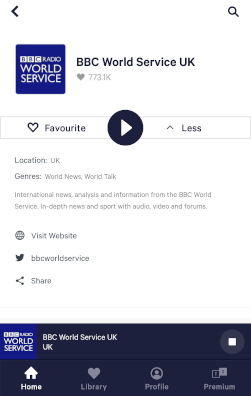
TuneIn is a global audio streaming service providing news, radio, sports, music, and podcasts to over 75 million monthly active users.
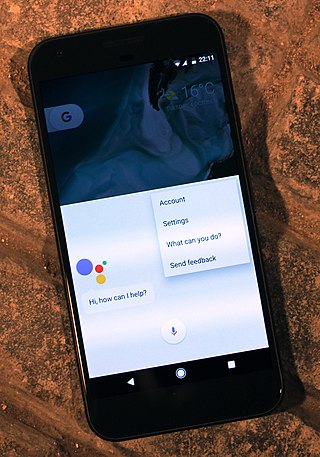
A virtual assistant (VA) is a software agent that can perform a range of tasks or services for a user based on user input such as commands or questions, including verbal ones. Such technologies often incorporate chatbot capabilities to simulate human conversation, such as via online chat, to facilitate interaction with their users. The interaction may be via text, graphical interface, or voice - as some virtual assistants are able to interpret human speech and respond via synthesized voices.

A smart TV, also known as a connected TV (CTV), is a traditional television set with integrated Internet and interactive Web 2.0 features that allow users to stream music and videos, browse the internet, and view photos. Smart TVs are a technological convergence of computers, televisions, and digital media players. Besides the traditional functions of television sets provided through traditional broadcasting media, these devices can provide access to over-the-top media services such as streaming television and internet radio, along with home networking access.
Cloud gaming, sometimes called gaming on demand or game streaming, is a type of online gaming that runs video games on remote servers and streams the game's output directly to a user's device, or more colloquially, playing a game remotely from a cloud. It contrasts with traditional means of gaming, wherein a game is run locally on a user's video game console, personal computer, or mobile device.

ecobee is a Canadian founded home automation company that makes smart thermostats, temperature, and occupancy sensors, smart light switches, smart cameras, and contact sensors. They were acquired by the American company Generac Holdings in 2021.

Amazon Fire TV is a line of digital media players and microconsoles developed by Amazon since 2014. The devices are small network appliances that deliver digital audio and video content streamed via the Internet to a connected high-definition television. They also allow users to access local content and to play video games with the included remote control or another game controller, or by using a mobile app remote control on another device.
Amazon Echo, often shortened to Echo, is a brand of smart speakers developed by Amazon. Echo devices connect to the voice-controlled intelligent personal assistant service Alexa, which will respond when a user says "Alexa". Users may change this wake word to "Amazon", "Echo", "Computer", and other options. The features of the device include voice interaction, music playback, making to-do lists, setting alarms, streaming podcasts, and playing audiobooks, in addition to providing weather, traffic and other real-time information. It can also control several smart devices, acting as a home automation hub.
Amazon Alexa, or, Alexa, is a virtual assistant technology largely based on a Polish speech synthesizer named Ivona, bought by Amazon in 2013. It was first used in the Amazon Echo smart speaker and the Amazon Echo Dot, Echo Studio and Amazon Tap speakers developed by Amazon Lab126. It is capable of natural language processing for tasks such as voice interaction, music playback, creating to-do lists, setting alarms, streaming podcasts, playing audiobooks, providing weather, traffic, sports, other real-time information and news. Alexa can also control several smart devices as a home automation system. Alexa capabilities may be extended by installing "skills" such as weather programs and audio features. It performs these tasks using automatic speech recognition, natural language processing, and other forms of weak AI.
A smart speaker is a type of loudspeaker and voice command device with an integrated virtual assistant that offers interactive actions and hands-free activation with the help of one "hot word". Some smart speakers can also act as a smart device that utilizes Wi-Fi and other protocol standards to extend usage beyond audio playback, such as to control home automation devices. This can include, but is not limited to, features such as compatibility across a number of services and platforms, peer-to-peer connection through mesh networking, virtual assistants, and others. Each can have its own designated interface and features in-house, usually launched or controlled via application or home automation software. Some smart speakers also include a screen to show the user a visual response.

Amazon Echo Show is a smart speaker that is part of the Amazon Echo line of products. Similarly to other devices in the family, it is designed around Amazon's virtual assistant Alexa, but additionally features a touchscreen display that can be used to display visual information to accompany its responses, as well as play video and conduct video calls with other Echo Show users. The video call feature was later expanded to include all Skype users.
A conversational user interface (CUI) is a user interface for computers that emulates a conversation with a real human. Historically, computers have relied on text-based user interfaces and graphical user interfaces (GUIs) to translate the user's desired action into commands the computer understands. While an effective mechanism of completing computing actions, there is a learning curve for the user associated with GUI. Instead, CUIs provide opportunity for the user to communicate with the computer in their natural language rather than in a syntax specific commands.
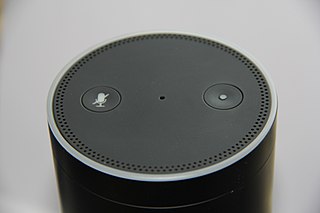
Voice computing is the discipline that develops hardware or software to process voice inputs.
Emotive Internet is a conceptualization of the Internet as an emergent emotional public space, such as how it serves as a space for the social sharing of emotions. It can also denote the quality of the Internet that allows it to be used to communicate in an emotive fashion or with emotional intent. Since it is an expressive medium, it also enables users to construct and represent their identities online. This is evident in the way emotional responses have been integrated in online communication and interactions.

Kyle McDonald is a media artist. McDonald creates visually appealing models using code, and releases tool kits for other artists to customize their own art as they see fit. McDonald was recently an adjunct professor at New York University Tisch School of the Arts' ITP. He is a member of F.A.T lab, and a community manager for OpenFrameworks. He was a resident at STUDIO for Creative Inquiry at Carnegie Mellon University.










